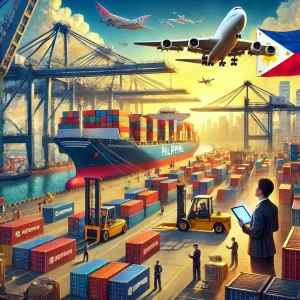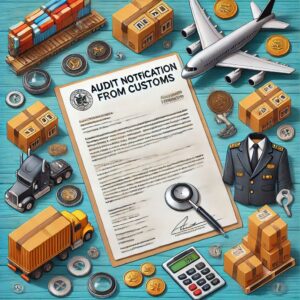Many of us engaged in international trade but not all of us understand the CIF meaning in shipping. Specific definitions vary slightly from country to country, but both treaties generally specify source and destination information used to determine where liability formally begins and ends. They also define the duties of buyers to sellers and sellers to buyers.
CIF is considered an expensive option when buying real estate. This is because the seller can use a carrier of their choice, who can charge the buyer more to increase the profit from the transaction. Communication can also be problematic if the buyer only trusts people acting on behalf of the seller. The buyer may need to pay additional fees in the port, such as docking charges and customs clearance charges before the goods are released.
Key takeaways?
- CIF is an international commerce term and only applies to goods shipped via a waterway or ocean1.
- With CIF, the seller covers the costs, insurance, and freight of a buyer’s order while in transit1.
- The risk transfer occurs from the seller to the buyer when the goods have been loaded on the vessel1.
- The buyer takes ownership of the goods once on the ship, and if the cargo is damaged during transit, the buyer must file a claim with the seller’s insurance company1.
What are the Seller’s responsibilities under CIF?
- Purchasing export licenses for the product
- Providing inspections of products
- Any charges or fees for shipping and loading the goods to the seller’s port
- Packaging costs for exporting the cargo
- Fees for customs clearance, duty, and taxes (for exporting)
- Cost of shipping the freight via sea or waterway from the seller’s port to the buyer’s port of destination
- Cost of insuring the shipment up until the buyer’s port of destination
- Covering the cost of any damage or destruction to the goods
Subscribe to the Ex-works24/7 newsletter
What CIF in contract?
What CIF in contract?
Cost Insurance and Freight often retains principal ownership with the seller until delivery. In a CIF contract, the seller bears or bears the risk and insurance costs until the goods reach their final destination. Ownership and liability pass from seller to buyer when the goods pass the ship’s rail at the port of destination. This way, sellers are responsible for everything related to shipping. You must provide the necessary shipping documents for both countries, pay the insurance costs and are responsible for the safe delivery of the goods.
What Is Cost, Insurance, and Freight?
CIF meaning : Cost, Insurance, and Freight (CIF). It is an international shipping agreement that represents the fees that a seller pays to cover the cost, insurance, and freight of a buyer’s order while the freight is in transit. Cost, insurance and freight apply only to goods transported by river, sea or sea.
The goods are exported to the buyer’s port specified in the contract of sale. Until the goods are delivered to the buyer’s port of destination, the seller bears the cost of loss of or damage to the goods. If the product requires additional duties, export papers, or inspections or diversions, the seller must bear those costs.
However, once the goods have arrived at the buyer’s port of destination, the buyer assumes responsibility for any charges or fees for unloading and delivering the shipment to the final destination. CIF is similar to Carriage and Insurance Paid (CIP), but CIF is only used for sea and river transport, while CIP is used for all modes of transport, such as truck can be used.

When to use CIF?
CIF Incoterms should only be used for sea and river transport. For those who are new to import, CIF can work as it allows them to understand the import process before they need to understand the export process. But be warned, the costs will always be significantly higher than arranging these services yourself and relying on a dedicated carrier to help you find the most cost effective way of shipping your goods. To understand more about CIF meaning in shipping, traders must understand clearly each side responsibilities.
Special considerations
As the risk is only assumed by the buyer once the cargo has been loaded onto the ship, certain situations may not be suitable for a CIF agreement. For example, in containerized freight shipments, goods may remain in a container for days before being loaded onto the ship at the seller’s port. Under CIF, the buyer would be at risk as the goods would be uninsured while in the container waiting to be loaded onto the ship. As a result, CIF arrangements would not be suitable for shipments, including containerized freight.
Conclusion: CIF is a commonly used term in international trade that outlines the responsibilities of the buyer and seller. It ensures that both parties understand their obligations regarding the shipping, insurance, and freight of goods. Understanding CIF is crucial for anyone involved in international trade to ensure smooth transactions and avoid potential disputes.
Frequently
Asked Questions
CIF stands for Cost, Insurance, and Freight. It is an Incoterm (International Commercial Term) used in international trade that indicates the seller’s responsibility for covering the cost of goods, insurance, and freight to transport the goods to a designated port of destination. Once the goods reach the destination port, the responsibility shifts to the buyer.
Under CIF, the seller is responsible for three key costs:
- Cost: The price of the goods being sold.
- Insurance: The cost of insuring the goods against potential loss or damage during transit.
- Freight: The cost of transporting the goods from the seller’s country to the destination port.
However, after the goods arrive at the destination port, the buyer is responsible for any additional charges such as import duties, taxes, and handling fees.
The seller bears the risk for the goods until they are loaded onto the vessel at the origin port. Once the goods are loaded onto the ship, the risk transfers to the buyer, even though the seller is still responsible for paying the freight and insurance until the goods reach the destination port.
The key difference between CIF and FOB lies in the point where risk and cost responsibilities are transferred from seller to buyer:
- Under FOB, the seller’s responsibility ends once the goods are loaded onto the ship. The buyer then assumes responsibility for shipping costs, insurance, and risk from that point onward.
- Under CIF, the seller is responsible for costs, insurance, and freight to the destination port. However, the risk still transfers to the buyer when the goods are loaded on the vessel.
When CIF terms are used, the buyer is responsible for:
- Paying for any customs duties, taxes, or import-related fees at the destination port.
- Handling the goods once they arrive at the destination port, including unloading, storage, and further transportation to the final destination.
- Any risks or losses incurred after the goods are unloaded from the vessel at the port of destination.
These aspects make CIF a popular choice for buyers who want to minimize risk and cost uncertainties up until the goods arrive at the destination port.



